Supporting your child's dressing skills
- 1-5 Years
- 5-11 Years
- 11-19 Years
- SEND
- Child development and growing up
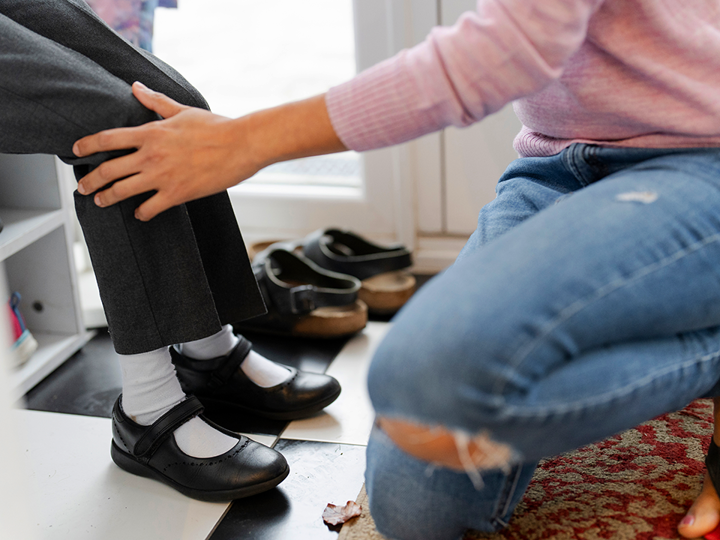
Some children can find learning to dress themselves really difficult. Tasks like doing up buttons and zips, putting on socks and tying shoelaces need a lot of tricky hand skills. Learning to get dressed is an important skill. It helps our child be more independent and gives them a sense of achievement.
Explore the topics on this page:
Ways to help your child as they learn
Some children can find it difficult learning to dress themselves. Fastening buttons, using zips, putting on socks and tying shoelaces requires a lot of tricky hand skills. There are a number of ways you can help your child as they learn these skills.
While your child is learning how to get dressed, make sure that they are sitting in a stable position. They can sit on the floor on a chair or a firm bed with their feet supported. If your child has poor balanced whilst sitting, try sitting them against a wall.
Allow time to practice getting dressed and undressed. Pick times that are less stressful and don't have a time pressure like bedtime, weekends and school holidays.
Loose fitting and baggy clothes like tracksuits and sweatshirts are easier to learn how to dress in. Tight clothes or lots of fastenings and zips can be difficult to put on. Using clothes with wide neck and arms holes will make it easier for your child to find the holes.
Describe the action and the body parts you are using as your child dresses. This can help your child understand and remember the instructions. For example saying "put your right foot in the shoe."
Encourage your child to dress and undress in front of a mirror. This will provide visual reminders for your child. They can also use the mirror to check that everything is correct before going out.
Be consistent. Consistency help your child to learn to dress themselves. Try not to change the techniques your child uses for getting dressed and the order that clothes are put on and taken off. Write down the order and techniques used when dressing your child. This can be used by carers or school staff to help keep the routine consistent.
Use visual reminders. Lay out clothes in the order they need to be put on or taken off. This can remind your child the order that they need to dress and undress. You can also use pictures or drawings of clothes to help remind them.
If your child makes a mistake, try not to immediately correct them. Get your child to look in a mirror and feel if it's all correct. Encourage your child to point out and sort out what needs to be done like pulling their t-shirt down.
Try not to watch your child all the time. You may find your child does more when they are left alone to get dressed or undressed.
If your child is sensitive to clothing, this can make getting dressed more difficult. Read more about dressing strategies for sensitive children.
Have you tried looking at our other advice?
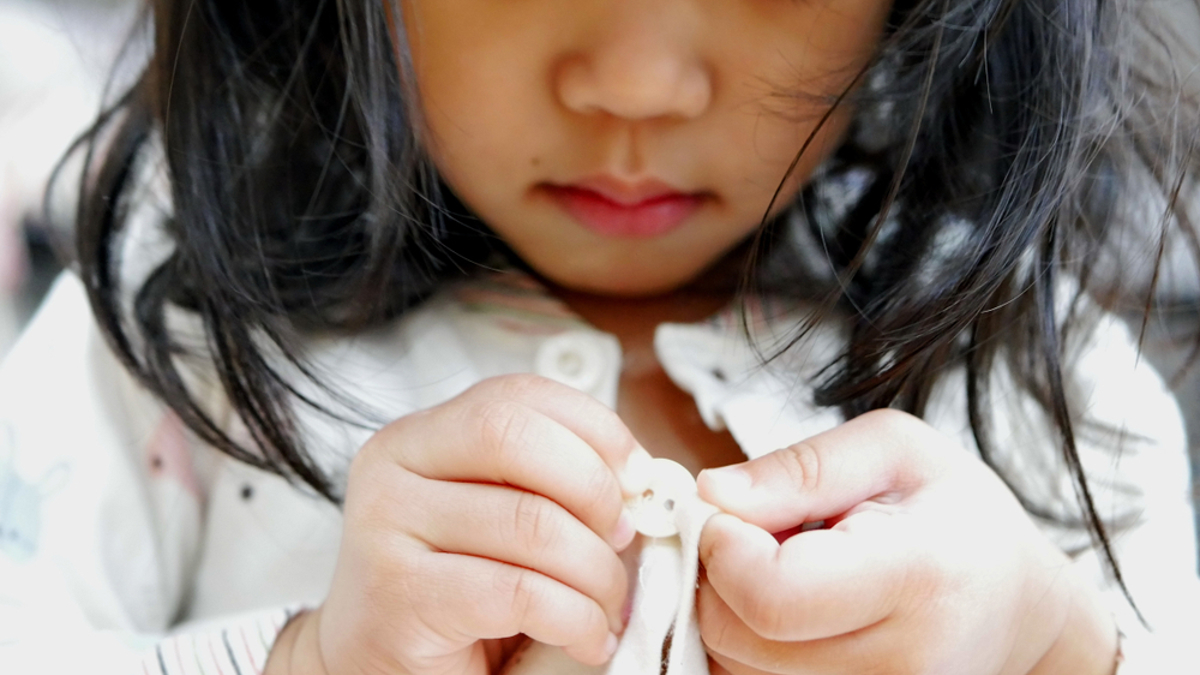
Zips
You can help build up your child's confidence with zips by letting them play with objects and clothing with zips such as pencil cases, coats, bags and purses.
A way to encourage your child to use zips more is to put toys and their favourite things in pencil cases, bags or purses with zips. This means they will need to use the zip to get their toys.
Adding a keyring or tab to a zipper can help your child when pulling the zip up or down.
If your child struggles with the threading the bottom of the zip, you could also consider a magnetic zip (also known as MagZip). The magnetic zips require less dexterity than a standard zip.

Putting on socks
The skills that help children and young people to put on socks are:
- showing an interest in clothes and attempting to pull at them
- lifting their arms or legs when asked to and spontaneously
- focusing on something (also known as visual attention)
- looking at the same thing together with someone else (also known as shared or joint attention)
- hand grasps and hand strength
It's important for you to give your child lots of changes to physically copy simple actions such as putting their hands in the air, hands on the head, clapping and reaching their feet. Encourage your child to use their thumbs. You can get them to stretch and open elastic bands or hair scrunchies.
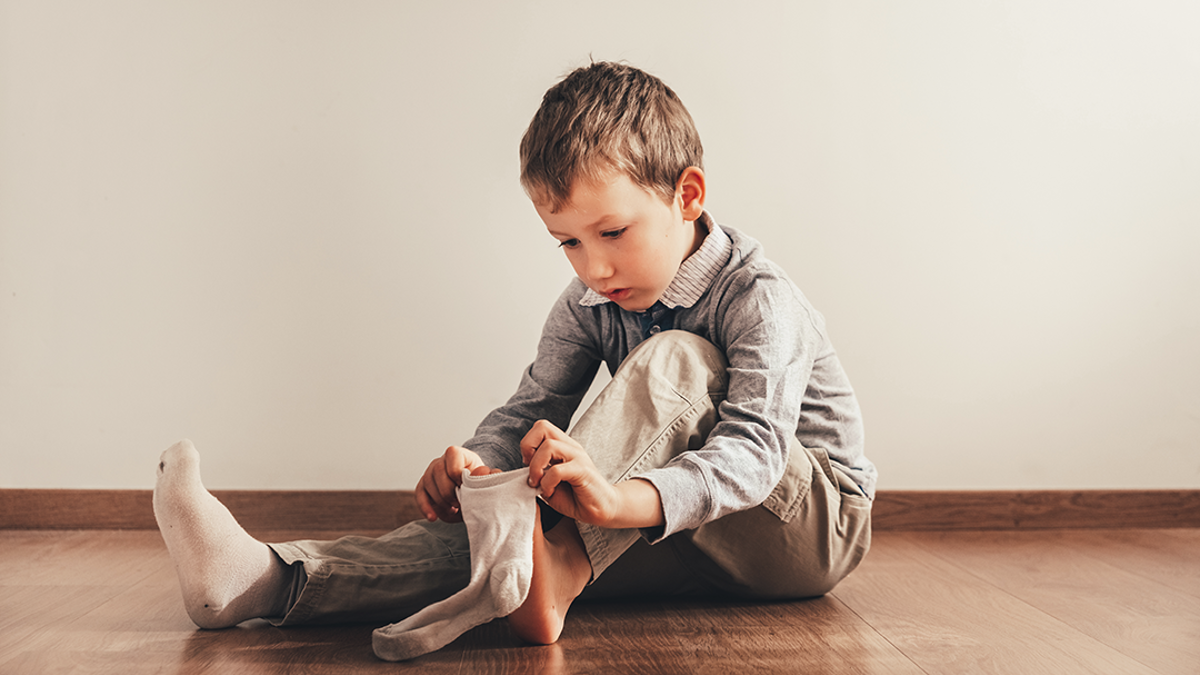
Positioning
When putting on socks, your child should be in a balanced and supported position on the floor. They could be sitting with their back against a wall, stable piece of furniture or being supported by an adult.
Encourage your child to keep their foot on the floor rather than lifting it when they are taking off or putting on a sock. This will help them to be more stable and less likely to lose their balance.
Practicing tucking thumbs
For this you will need some old or odd socks that you are comfortable cutting up. You could also use a scrunchie (if using a scrunchie, start from step 2.).
Encourage your child to use both hands. They can tuck their thumbs inside the sock on opposite sides.
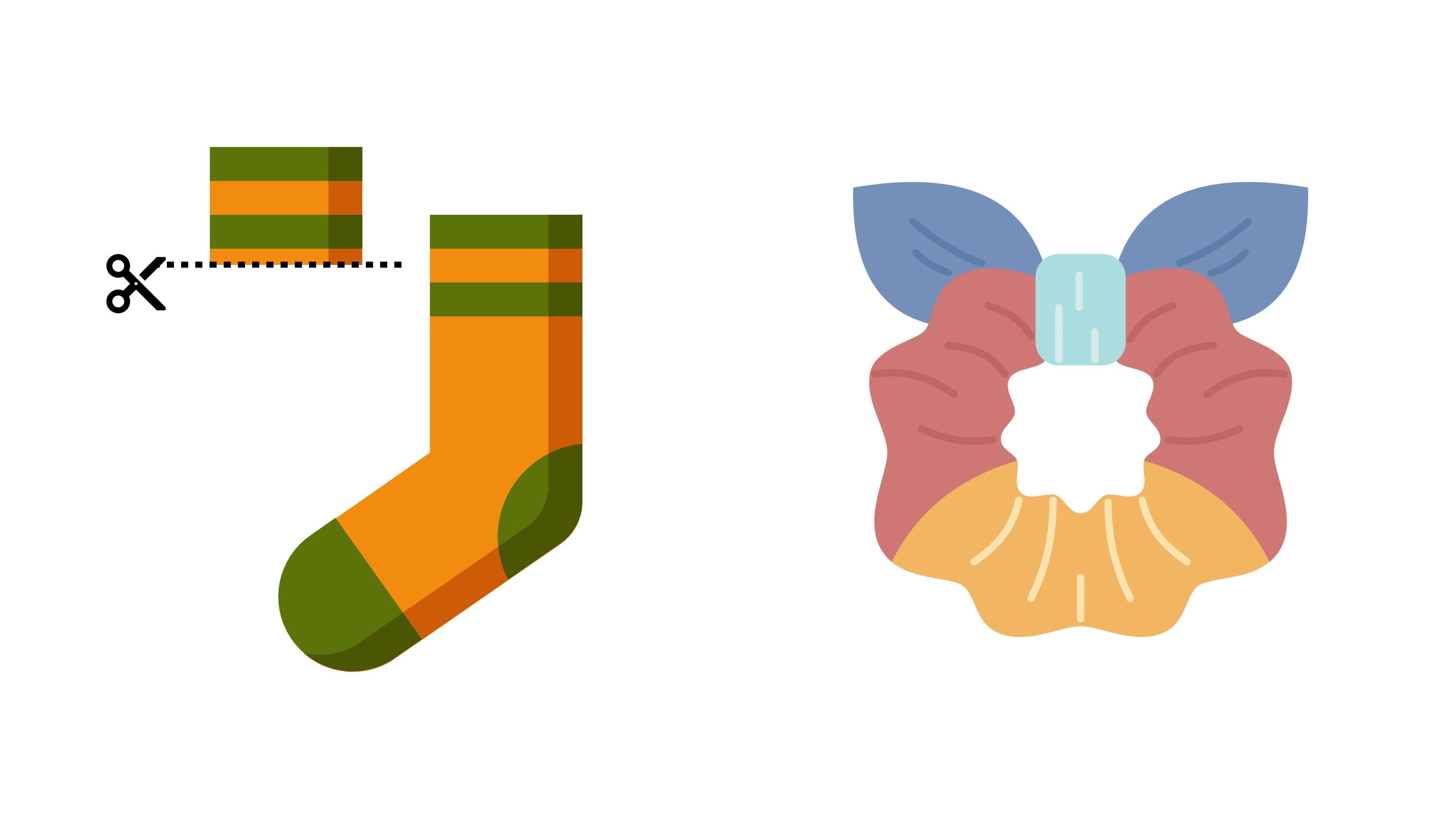
- Cut the top off a sock. You will need to make sure that the elastic is still attached.
- Put the sock top or scrunchie on your child's ankle.
- Encourage your child to put their thumbs either side of the sock top or scrunchie.
- Stretch the sock top or scrunchie wide.
- Pull the sock top or scrunchie down your child's legs and off their foot.
Once your child is used to tucking their thumbs in to pull off socks, you can start practicing putting socks on and taking them off.
Practicing putting on socks
You can adapt a pair of old or odd ankle socks to help your child feel more confident putting on socks. For this you will need some old or odd socks that you are comfortable cutting up.
Ankle or tube socks can be easier for children to use in the early stages of learning.
You will need to cut a pair of old socks in the following ways:
- Cut the top off, keeping the elastic.
- Cut the foot off, keeping the heel.
- Cut the toes off.
Encourage them to start with just the top of the sock. When they are comfortable using the top of the sock, they can move onto using the sock with the foot cut off. They can then move onto the sock with the toes cut off. Then they can move onto a normal sock.
Using socks with a coloured heel and toe can help your child to accurately position the sock.
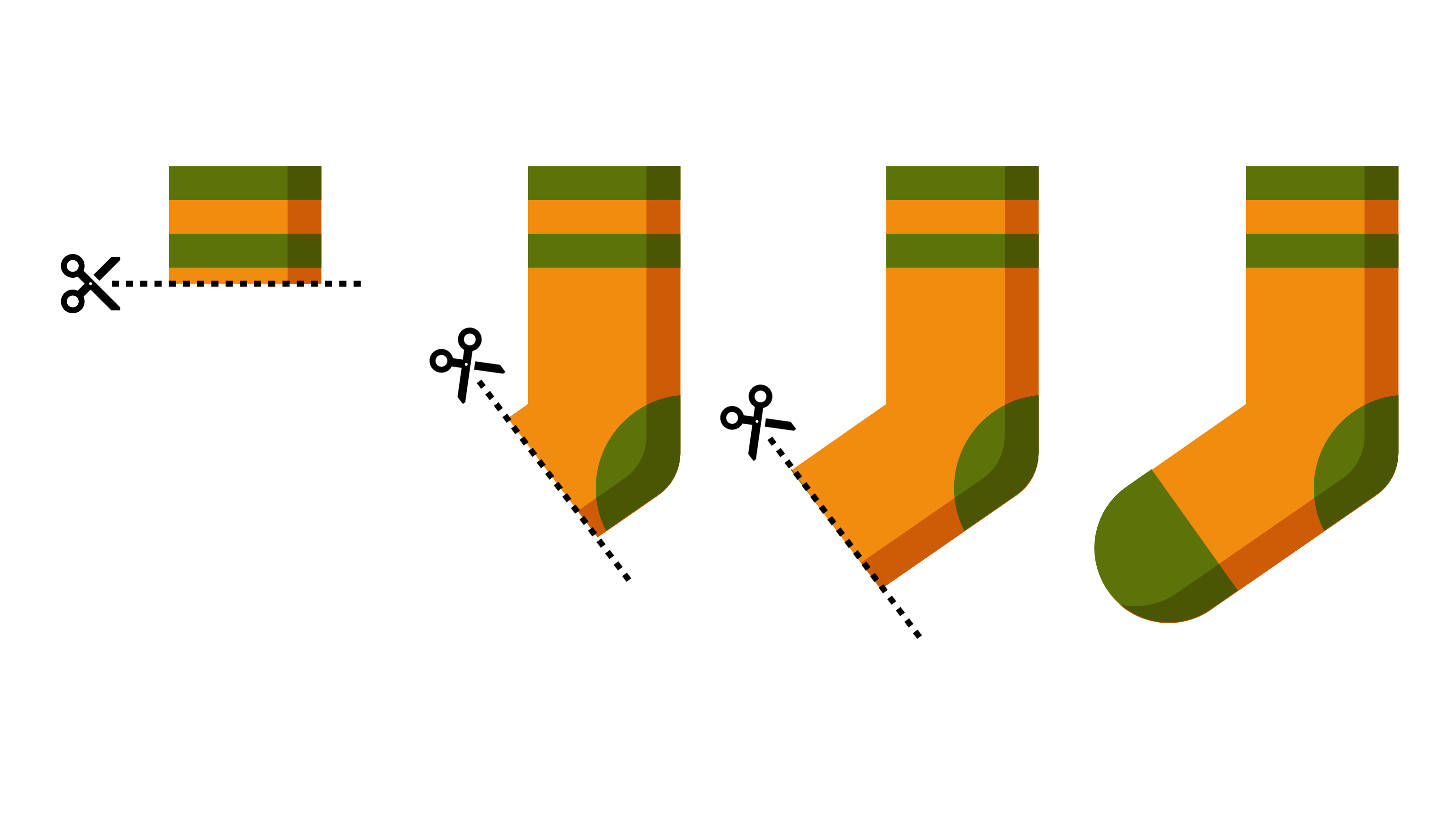
Adjusting socks
Adjusting and twisting socks can be tricky. You can help your child by using 'pinching fingers'. This is when they use their index finger and thumb. It can also be known as pincer grip. Try to encourage your child to use their pinching fingers in play and activities. You can do activities like using stickers or picking up smaller foods.
Ask your child to show you their pinching fingers before trying to adjust their socks. When you are showing your child how to adjust their socks, make sure that they are using both hands on opposite sides of their feet.
Help them by telling them to "pinch and pull" or "pinch and twist" can help them member how to grab and move the sock material.
Tying shoelaces
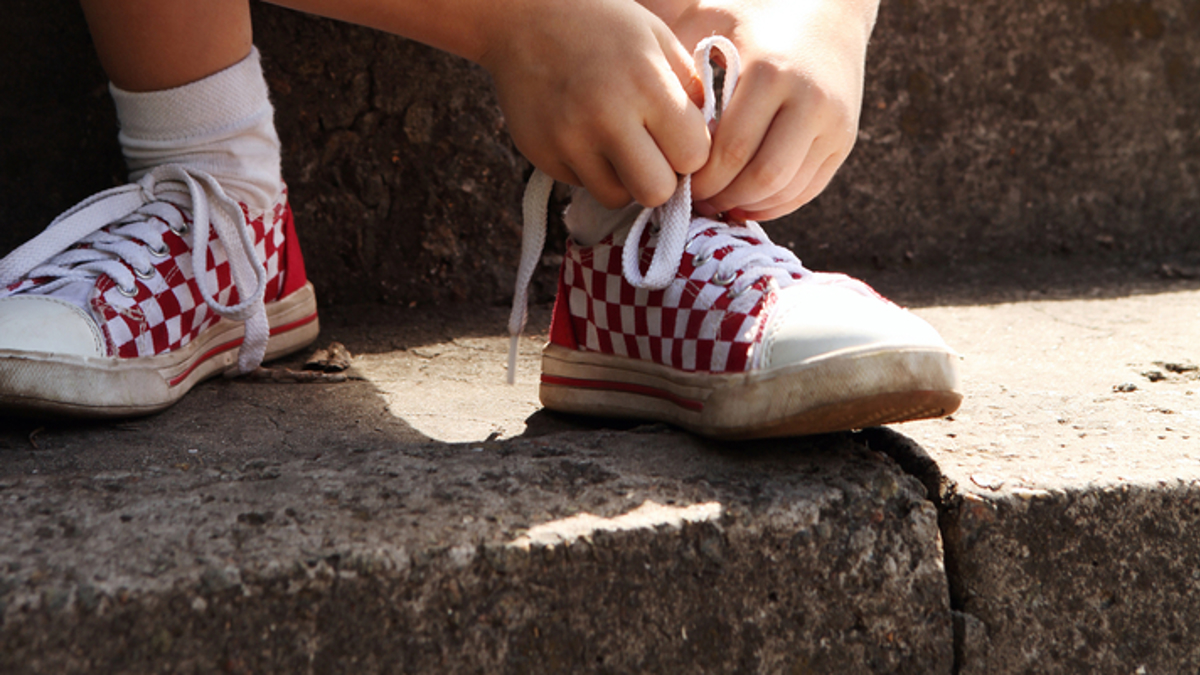
Shoelaces can be tricky for children and young people. It is particularly hard for children and young people who have difficulties with their coordination.
There are lots of activities to help your child learn how to tie their shoelaces.
Playing on obstacle courses in the park. This can help your child practice and learn the concepts of under, over, around and through. You can play a game where your child does these in a similar sequence to tying shoelaces. For example, they could go under the climbing frame, through the tunnel, run around the climbing frame and then climb over something.
Paper weaving and lacing games. They can help your child understand how the lace goes behind and is posted through the hole.
Tying bows with different coloured ribbons. Use wider ribbons to start with and then move onto thinner ribbons.
Try tying using a skipping rope. Skipping ropes are thicker cord and is easier to hold. This can help them get used to the hand movements required.
Practice tying shoelaces using 2 different coloured shoelaces. This will make following shoelace tying instructions easier.
If your child is finding it hard to tighten their shoelaces, they may need to build up their hand strength. You can help your child build up their hand strength by encouraging them to play with playdough, rip up paper or card or knead dough.
Instructional video on how to tie shoelaces in 1 second by AskYaz
Tying shoelaces song video by LBB Junior
Alternatives to shoelaces
Some children can find shoelaces really difficult. If your child is continuing to struggle to tie there laces there are alternatives that may be helpful for your child.
Velcro shoes - These shoes use velcro to fasten and secure the shoe. These will be available in all sizes in most shoe shops.
Magnetic closures - These are magnetic closures that help adapt laced shoes for your child's needs. They allow the shoe to open up to make it easier to put on and take off.
Elastic shoelaces - The laces are made from silicone. These laces can be tied once, and then stretch when your child takes the shoe on or off. They change laced shoes into slip-on shoes. They are dirt-resistant and easy to wash.
No-tie laces - These laces are for sports shoes such as trainers or hiking boots. They are elasticated to help your child put their shoe on. They also have a toggle to tighten the fit.
Backward chaining
Break down each part of getting dressed into smaller steps. Teach your child the final step of the sequence first. This is called backwards chaining. It helps give a sense of completion and achievement. When your child or young person can complete the final stage by themselves, you can add the step before. Continue backward chaining until the child or young person can complete the whole sequence by themselves.
This is a useful technique to use when teaching a child how to dress or undress. This technique can also be helpful for teaching any task that has several steps.
Backward chaining steps
- Break the task down into small steps. You may find it helpful to do the task and write down each action as a step.
- Complete all the steps of the task for your child, except the last step.
- Teach your child the last step. You can help your child by showing them, telling them or doing the action with them.
- Practice this step until your child can do it without your help.
- Complete all the steps for your child, except the last two steps.
- Teach them the second last step and let them complete the last step.
- Once they have mastered the second last step, complete all the steps except the last three for your child.
- Teach them the third last step and let them do the last two steps themselves.
- Repeat until they can do all the steps.
Video resources
Supporting children in developing dressing skills
Getting ready for school
Last reviewed: 1 November, 2024

